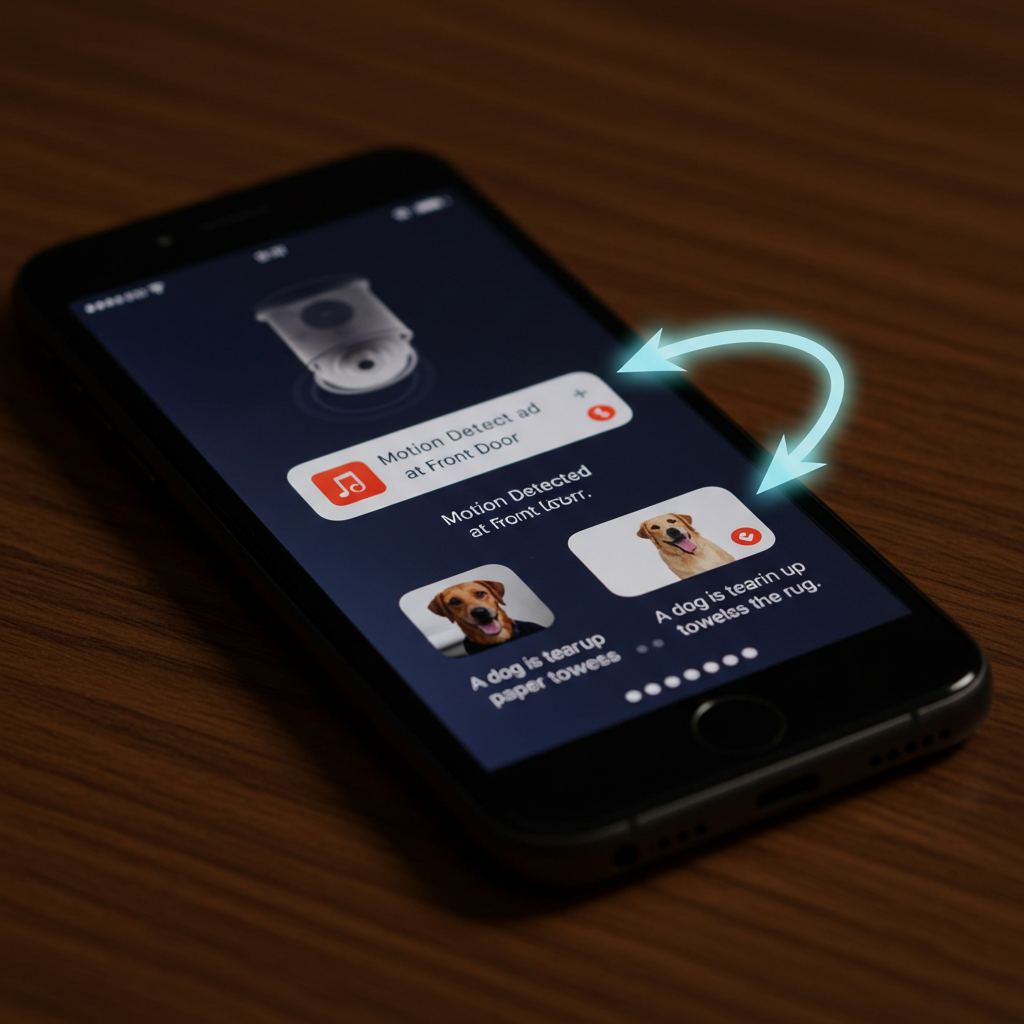The constant stream of generic smartphone alerts—”Motion detected at your front door”—is a familiar reality for any smart camera owner, often leading to “notification fatigue.” Now, Ring is rolling out a powerful AI upgrade designed to solve this problem by adding meaningful context to every alert. The new feature, called Video Descriptions, aims to not just show you what’s happening at home, but tell you a story about it.
This update comes at a time when many of Ring’s popular devices, including camera and doorbell bundles, are being featured in Amazon’s early Prime Day deals, making the ecosystem’s software capabilities more relevant than ever.
From “Motion Detected” to Detailed Narratives
Instead of a simple alert that a person was detected, the new Video Descriptions feature provides a short, descriptive sentence about the event. For example:
- Before:
Front door: person detected - After:
A person with a broom and mop is leaving.
Or, for an indoor camera:
- Before:
Living room: motion detected - After:
A dog is tearing up paper towels on the rug.
The immediate benefit is clear: users can glance at their phone’s lock screen and instantly know whether an event requires their urgent attention, all without needing to wait for a video feed to load. The feature is rolling out now in beta for Ring Protect Plus or Pro subscribers in the US and Canada (initially in English only) and will work on all current Ring cameras and doorbells.
The Future Vision: Proactive Anomaly Detection
According to Ring founder Jamie Siminoff, this is just the first step. The long-term vision is to use this AI to power more proactive security features, most notably “custom anomaly alerts.” This ambitious feature would allow the AI to learn the normal routines and patterns of a household.
The system would then only generate an alert when something out of the ordinary happens. Your daily mail delivery at 2 PM might not trigger a notification, but an unknown person approaching your side door late at night certainly would. This represents a strategic shift toward a “smarter, not louder” approach to home security.
The Competitive Landscape
Ring isn’t alone in this space. Other smart security companies are deploying similar AI features. Arlo has “Event Captions,” Wyze offers “Descriptive Alerts,” and Google Nest is using its Gemini AI to power a similar feature for its cameras.
One key differentiator, for now, is that competitors like Google and Arlo also offer facial recognition. This allows for even more specific alerts, such as “Johnny is at the front door,” a level of personalization Ring’s current system does not offer.
The Bigger Picture: Opportunities and Concerns
The move toward more descriptive AI alerts opens up new possibilities for the smart home. Richer data from a camera could be used by a central AI like Alexa to trigger more intelligent actions and routines throughout the home.
However, this increased intelligence also brings valid concerns. More detailed data collection inevitably raises questions about user privacy and the potential for misuse. Furthermore, the accuracy of the AI is paramount. If the system incorrectly dismisses a real threat as a “normal” event—like mistaking a thief carrying out your expensive vacuum for a cleaner leaving—it undermines the very security it’s meant to provide.
For now, Video Descriptions marks a significant and welcome evolution in smart camera technology, aiming to make our device notifications truly informative.

